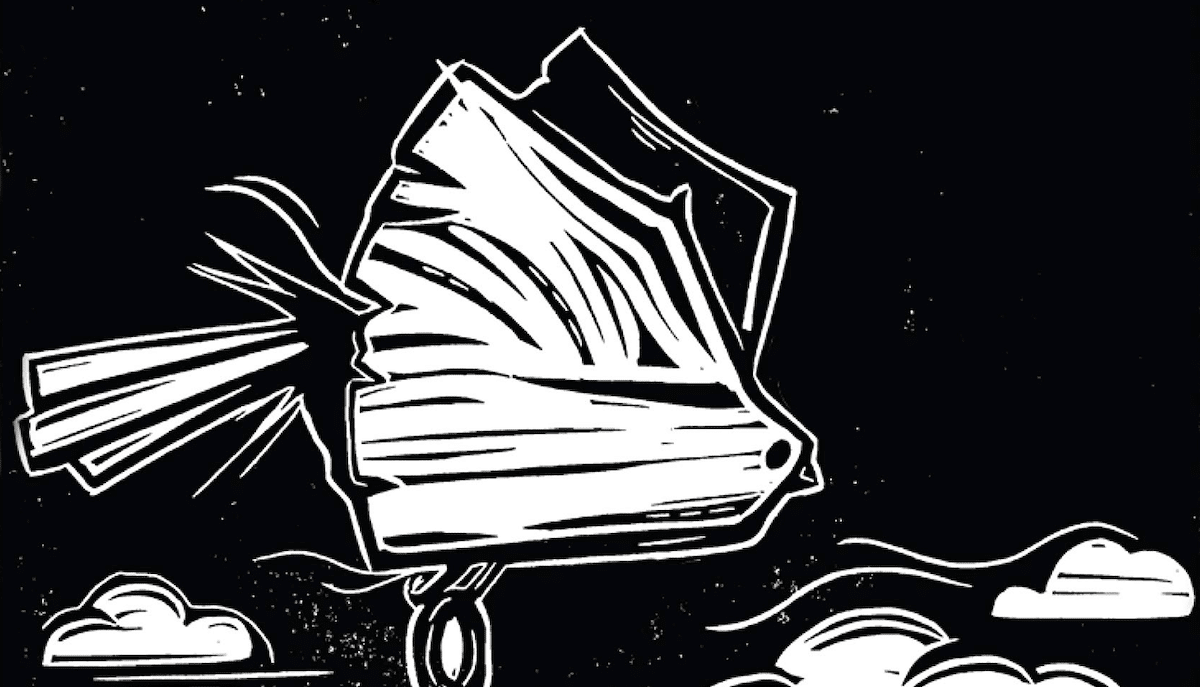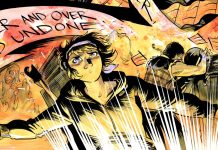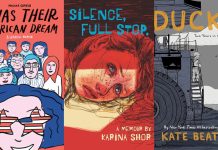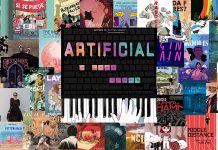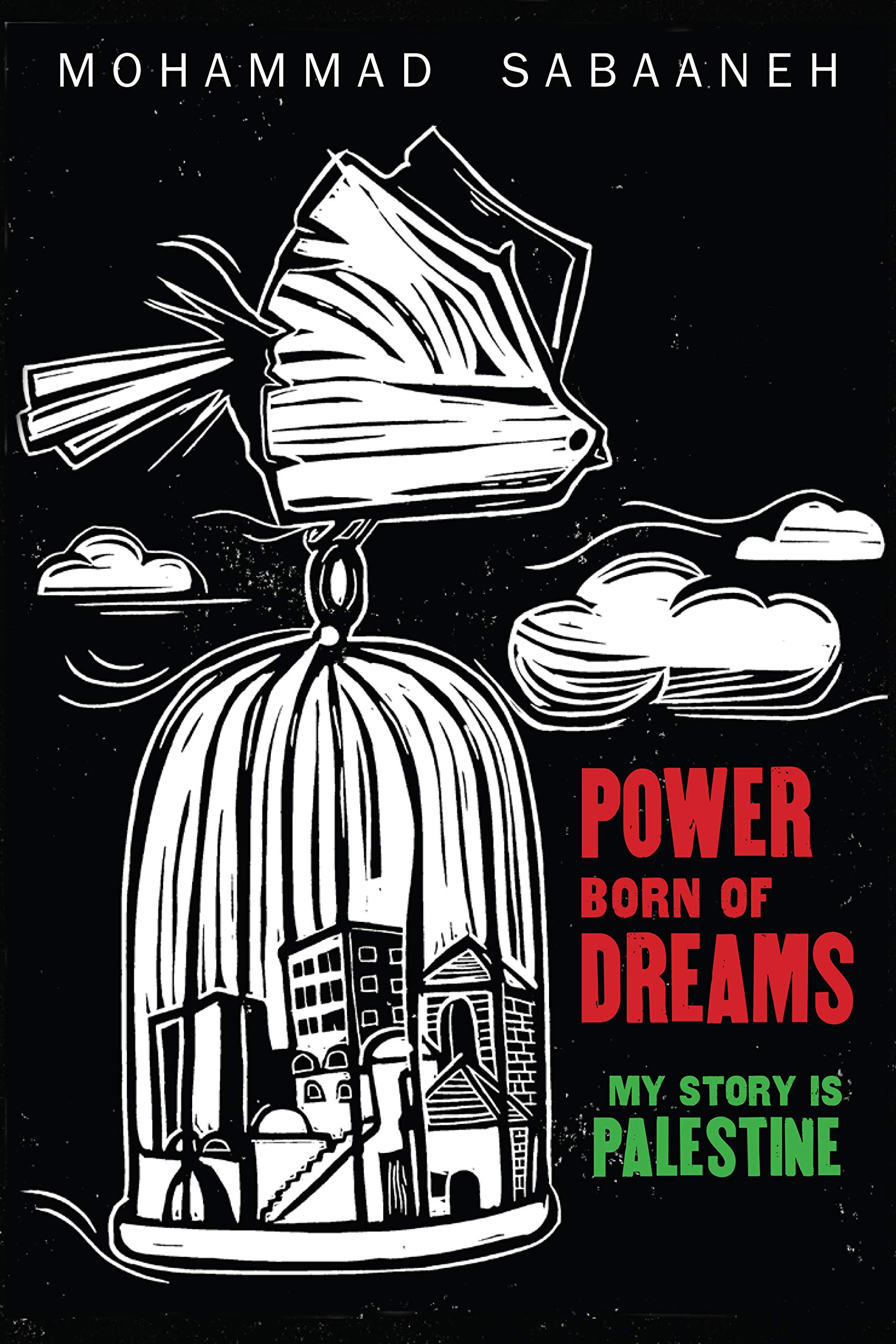
The Beat caught up with Sabaaneh over email to learn more about Power Born of Dreams. We asked about the origins of the graphic novel, about the efficacy of political cartooning and about the striking linocut process used for the book’s art.
AVERY KAPLAN: Can you tell us about the origins of Power Born of Dreams? What went into the research and creation of this powerful graphic novel?
MOHAMMAD SABAANEH: In 2017 I published my first book in the US. It was a book of my political cartoons called Black and White, and I learned more about comic arts while on the book tour in the US. During that time, my American friends suggested the idea of a graphic novel about my experience in an Israeli prison. Not long after that, I met Liz Frances from the Street Noise and I told her about my ideas for a graphic novel, and she offered to publish my book. This is what became Power Born of Dreams.
At that time, I was exploring how I might use my art in another way. My master’s degree in the UK gave me a great opportunity to learn more about comic arts and this kind of visual language.
I was interested in the idea of using my life inside the prison as a main story and comparing life inside the prison and outside the prison, to make the connection that under occupation all the Palestinians are prisoners.
All the stories in this book are based on real stories. These people are my friends, relatives, and colleagues.
My book is based on the concept of settler colonialism. Settler colonialism is a system in which a group of settlers, often from a powerful nation, establishes a new community on a foreign land to occupy and take over that land. The settlers see the land as their new homeland and set out to displace the indigenous population. Many scholars and activists argue that the situation in Palestine can be characterized as a form of settler colonialism. Creating reservations that function as prisons for the Palestinians is a main feature of settler colonialism and that’s exactly what I wanted to illustrate in this book.
KAPLAN: Why is political cartooning such an effective method of communication? How was this graphic novel a departure from your previous cartooning experience?
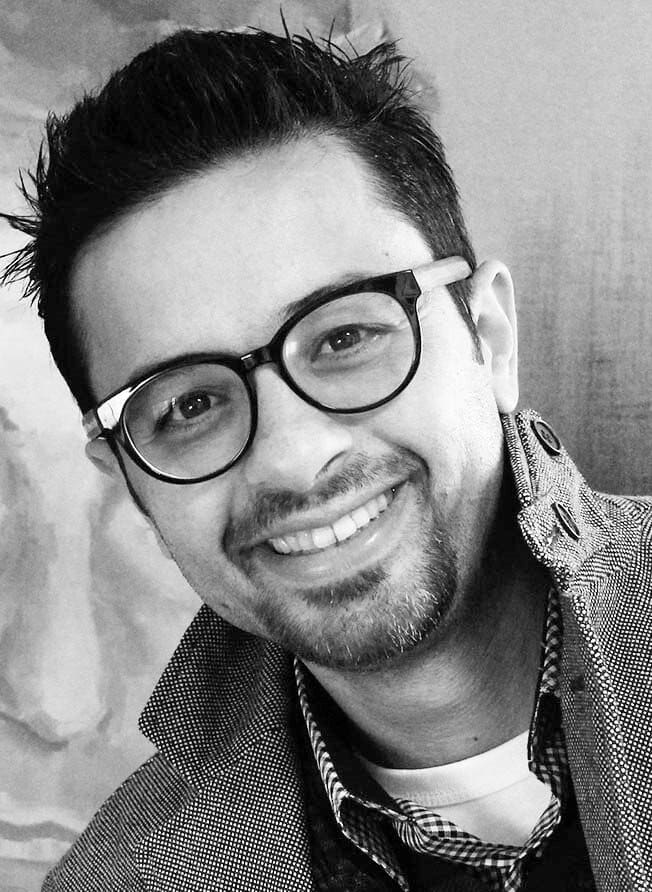
When I published my first book in the States, I found that readers were asking questions about everything. They wanted to know more and more about Palestine. The comics gave them this chance. Comics can help to shape collective memory by visually representing history. They can be used in education by personalizing historical events, humanizing issues, and showing alternative perspectives.
In Palestine, not many people had used this kind of art before I published my comics. So, I had a hard mission not just to be an artist, but also, to teach comics. I gave a workshop for young artists last year, and three of them will have their comics published in World War Three magazine.
KAPLAN: Can you tell us about the linocut printing process you used for the art in this book, and why you chose to use it?
SABAANEH: Maybe you cannot imagine that in Palestine we do not have linocut tools or workshops to learn how to do it. But I saw this kind of art for the first time when I visited the States. And I learned more about this medium through reading articles and watching YouTube. I got my tools from the States and the UK.
My experience inside the interrogation cell inspired me to use this medium. While I was there I found many carvings on the cell walls. Names, Palestinian maps, and numbers. I tried to carve my name, but I could not do it. That always bothered me. So, because of that, I decided to carve the stories of those people outside the prison. Like the ancient people who engraved their history on the walls of temples and caves, we must engrave our stories.
In addition, using the linocut technique to illustrate the life of prisoners can shed light on what it is to be incarcerated. Linocut, a printmaking method involving carving into linoleum, presents a tactile and raw quality that I think works well to show the stark realities of prison life. The deliberate act of carving into the linoleum becomes a metaphor for the restrictions and challenges of the prisoners’ lives.
The linocut’s black-and-white aesthetic can symbolize imprisonment. People in prison are confined to a world of contrasts—light and darkness, freedom and captivity. Through my deliberate choice of linocut, I have tried to depict the monotony, repetition, and isolation experienced by prisoners, using bold lines and sharp contrasts to evoke the harshness of their environment.
KAPLAN: You wrote the preface for Power Born of Dreams, which was published in 2021, in 2020. I’m curious how your perspective on the book has evolved in the intervening years (if it has evolved). Is there any addendum you’d add to the preface?
SABAANEH: My friend from Gaza, Nidal Al Whedi, the one I depict in the book who told me about his life in Gaza with the noise of the Israeli drones, has been missing since the 7th of October. My friend Maisara Baroud, the artist who inspired me to create my bird character by using one of his drawings as a reference, lost his home and his studio. The Israeli army bombed them both. My brother whose experience in administrative detention I tell about in the book, was re-arrested by the Israelis. The story that I wrote about in Power Born of Dreams is not over. The story is still going on. The tragedy is still going on. As you are reading these stories, the characters in the book are facing the same or worse atrocities every day.
I should mention that this book was not intended for your entertainment. These comics are meant to inspire people to take action. I have tried with this book not only to document heroes’ lives but maybe to help save them.
KAPLAN: What kind of conversations do you hope readers will have after reading Power Born of Dreams? What kind of reactions has the book garnered so far?
SABAANEH: At their best, comics can do even more than teach people and show them another way of looking at things. When I made this book, I was hoping to provoke and engage people to take action. So far, I don’t think I have created a revolution through this book, but I do believe that I have added to the overall knowledge of the Western audience with this book. And I have introduced this visual language to my people and to young Palestinian artists as a model. Many Palestinian artists have been inspired by my book and have started creating their own comics. Palestinians are very late to that table with that, but we have started. Samir Harb is a friend of mine. He had started his journey with comics years ago. But now he has set out to try to publish his comics. My comics gave hope to other Palestinian artists to take on the publishing challenge.
The result from this project may not be immediate, but I think we, (me, and Liz at Street Noise, and Simona and Anita, the Italian and French publishers) we have made a change.
Power Born of Dreams: My Story is Palestine is available at a bookstore and/or public library near you.



